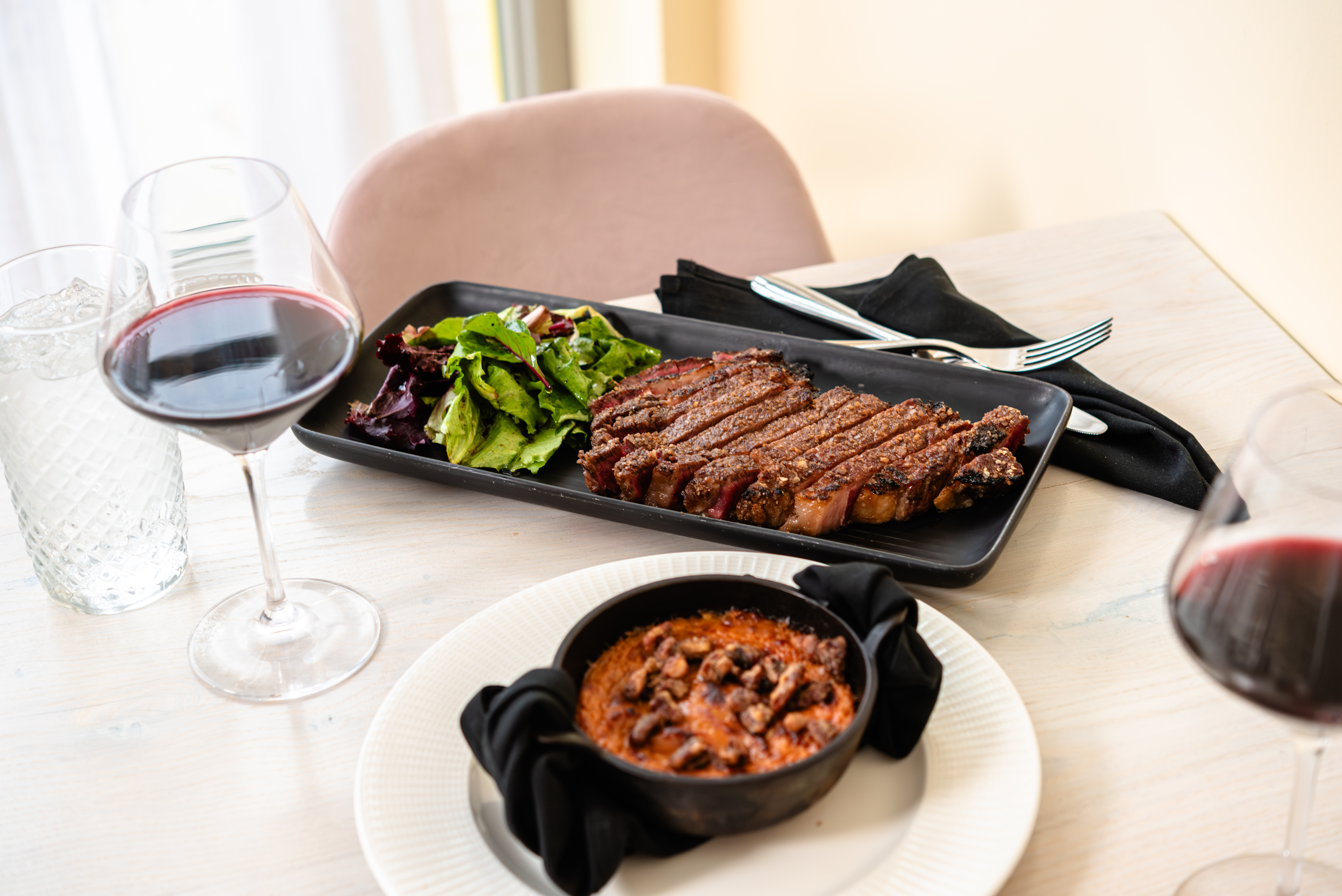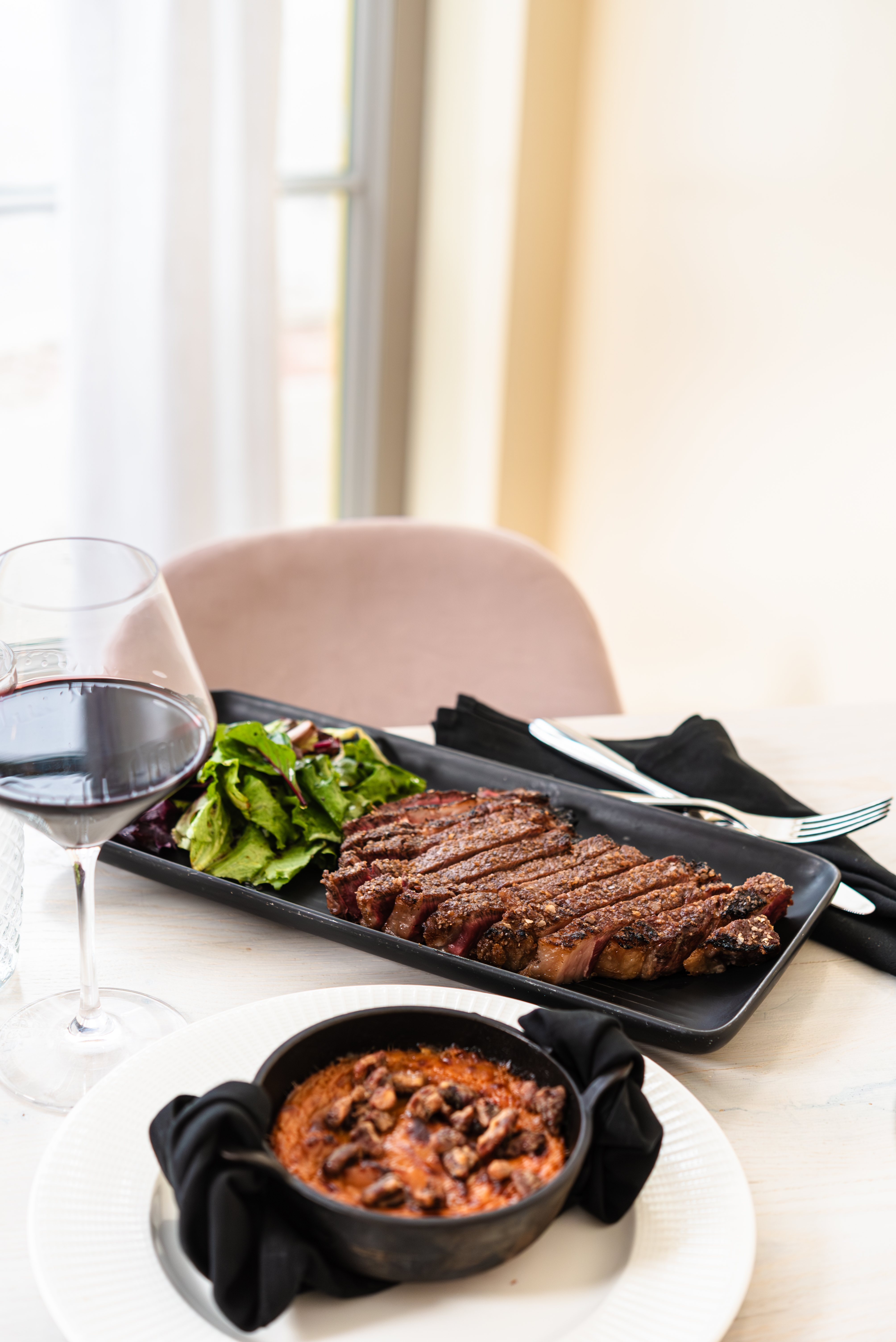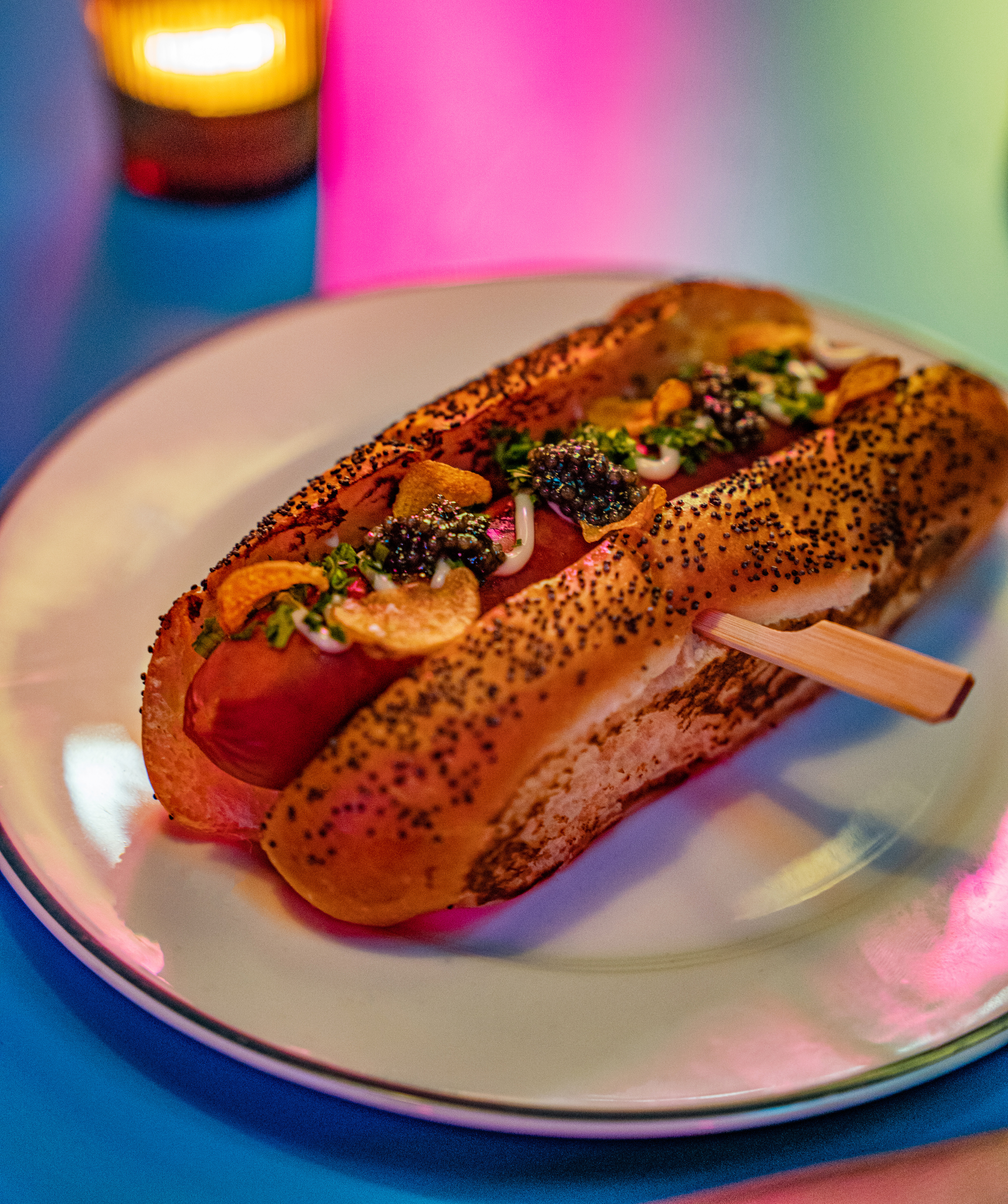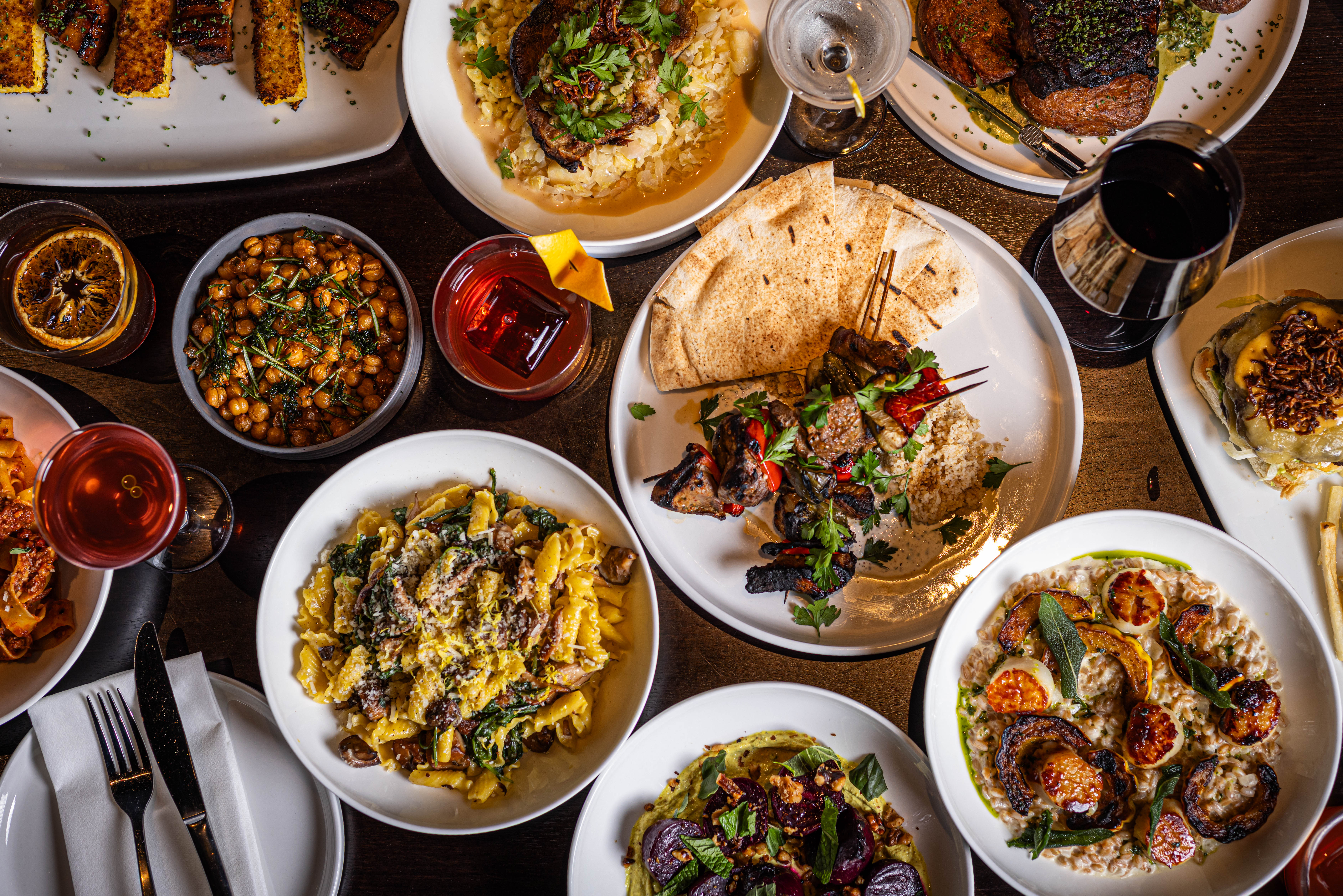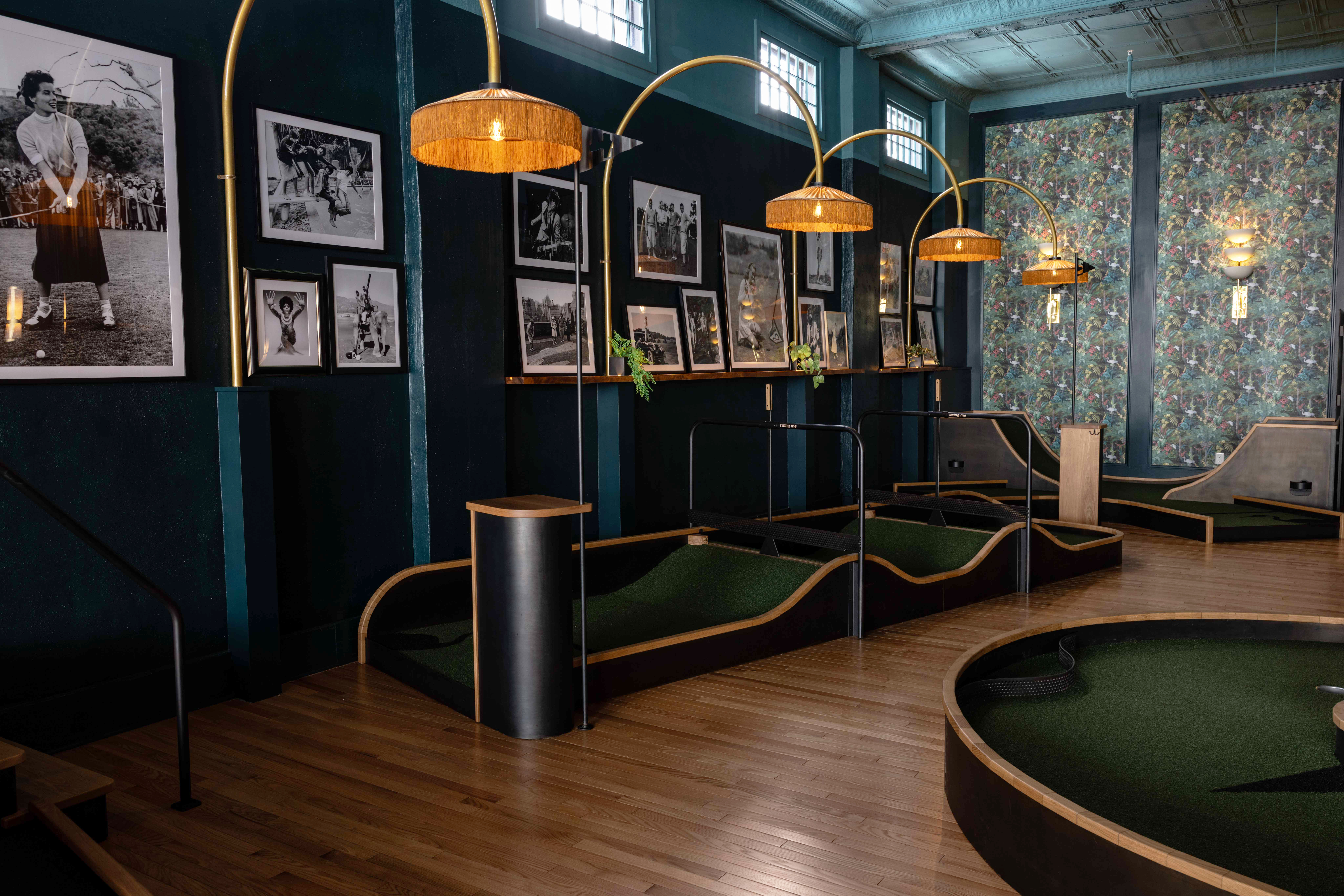Dimsum for Dummies
by Laura Taxel | Jan. 24, 2007 | 5:00 AM
Five metal carts, filled with appetizer-sized portions of food, navigate the room at regular intervals. Whenever I make eye contact with the women pushing them or signal with my hand, one stops at my table. I point at what I want.
I don’t know the names of anything and couldn’t pronounce them correctly even if I did, so I go for my familiar favorites. Occasionally, if I’m feeling bold, I’ll try something new. But much of this stuff looks, well, weird. I’m hesitant to wrap my mouth around what is, for me, totally unidentifiable fare.
Many items are arranged on saucer-sized plates. Other dishes are hidden in round, covered-metal steamer baskets stacked five or six high. When I indicate an interest in seeing what’s inside, the dim sum lady obligingly lifts the lid to give me a peek. Soon, I’ve assembled a veritable feast, and as soon as I polish off what’s spread out in front of me, another cart trundles past with more delicious, and mysterious, possibilities.
This is the dim sum experience — the Chinese version of tapas that roughly translates as “a little bit of whatever your heart desires.” Best described as a moveable buffet, this age-old teahouse tradition continues to be popular among Chinese living in the United States and at five restaurants in Cleveland (see page 173), which offer an authentic array of sweet and savory delicacies.
A typical spread includes 30 to 60 types of stuffed dumplings, savory pastries, steamed buns and regional specialties. But be forewarned: Dim sum offerings don’t cater to American tastes. Unless you’re an experienced dim-summer, it requires an adventurous spirit and a willingness to experiment. You won’t find fried rice, sweet and sour pork or anything resembling pepper steak here. Instead, expect to dig in to turnip cakes, crispy taro dumplings, bean curd rolls and lotus root patties.
After you’ve done dim sum a few times, though, you’ll recognize that those gelatinous looking rectangular white things are deliciously tender rice noodles filled with shrimp, the pale squiggly shaped stuff is beef tripe (which some people really do love), and the jellylike tubes the color of coffee are a dessert made from black sesame seeds.
You can select as many — or as few — items as you wish and are charged by the serving (usually small, medium and large). The cart pushers keep a running tab, marking a card left on the table. At the end of your meal, a waiter tallies up the number of marks in each category.
Eating some specialties requires a tutorial.
At C & Y, I get a lesson in enjoying Phoenix Claws from general manager Jimmy Fong. Don’t let the name fool you. It’s a nice way of saying chicken feet.
Preparation involves soaking, marinating, steaming and deep-frying. The result is something with a mild, slightly sweet flavor. But with lots of small bones inside, the meat must be teased off. Jimmy pulls the three-toed thing through his teeth while sucking at the same time.
This leaves me with a mouthful of inedible skeletal debris that I’m not sure quite what to do with until Jimmy bows his head and spits it out onto his plate. Though I feel like a 4-year-old with bad behavior, I do the same.
The whole thing requires some getting used to. Take the sticky rice in lotus leaf, for example: Don’t eat the wrapper. Instead, open the steaming, aromatic packet and dig into a mound of rice studded with bits of Chinese sausage, mushrooms, chicken and dried shrimp. Leave the leaf, which may be as big as a dishtowel when unfolded, on the plate like a used napkin.
Variations on the theme of dumpling are the centerpiece of dim sum dining. The handmade pockets are folded, pinched and pleated into a distinctive shape specific to the filling inside, which reveals its contents to the trained eye.
Shiu my, for example, are open at the top and have a “ruffled” collar. Forming them proves to be much harder than it looks. In owner Nancy Yuen’s kitchen at Bo Loong Restaurant, a cook scoops a heaping tablespoon of ground pork and shrimp in gloved fingers, places the mound at the center of the paper-thin tofu wrapper, molds it in her cupped palm, turns down the other hand, and then dots the top with bright-red shrimp eggs. For every one I finish, she completes three. Mine are lumpy, overflowing or under-filled, and no two look quite the same. She repeatedly shows me the technique and, then, just as patiently, repairs my mistakes.
On the other side of the room, big sheet-trays of bright-yellow, egg-custard tarts are pulled from the oven, ground chicken and spices are being mixed together in 20-pound batches, and a young woman is loading the multitiered steamers on the stove with cha siu bao — the doughy little blobs will emerge from the cooker with a texture reminiscent of Wonder Bread and smelling of the barbecued pork that’s hidden within. The deep fryer sizzles as a batch of sesame balls are lowered into the hot oil.
As the lunch hour approaches, the pace quickens. The carts are stocked, stacked and ready to roll. Some feature big wooden buckets filled with rice porridge, called congee, or tofu in sweet syrup. Another comes equipped with a tiny grill for finishing certain dishes.
I follow them out into the dining room, find a place to sit and hail the first one that passes my way. The small elderly Chinese woman in charge of the cruising steam table points to some of my favorite dishes — eggplant stuffed with shrimp, baby ribs with black bean sauce and miniature pot stickers — and I give her the up-and-down head nod that means yes in any language.
She’s got plenty of other things I’d like to try, but I don’t want to fill up too fast. Because I know there’s more wonderful dim sum to come.
Dim Sum-thing Special
Head downtown for this unique dining experience seven days a week. The best selection is on Saturday and Sunday when many Chinese families show up for a leisurely brunch. Dim sum hours are typically from 10 a.m. to 3 p.m.
Bo Loong Restaurant
Price per plate: $1.50 to $3.75
Don’t miss: bean curd skin roll, beef meatballs with watercress
They’ve been serving dim sum here since 1986, longer than any other place in town. The sprawling restaurant comfortably seats 200. Although the carts stop rolling in the late afternoon, diners can order a limited variety of dim sum until closing — a minimum of three items required.
3922 St. Clair Ave., (216) 391-3113
C & Y Chinese Restaurant
Price per plate: $1.95 to $3.75
Don’t miss: white turnip cake, taro ball
The restaurant is big, and on weekends it’s packed, noisy and bustling. The newest addition to the developing AsiaTown district in the St. Clair-Superior neighborhood, it attracts multigenerational groups who often combine grocery shopping in one of the area’s Asian markets with a leisurely dim sum meal.
2222 St. Clair Ave., (216) 566-1188
Li Wah
Price per plate: $2 to $3.50
Don’t miss: Leek and shrimp dumplings, water chestnut cakes
Located inside Asia Plaza, an indoor urban shopping mall for all things Chinese, the restaurant offers intimate tables for two, round tables big enough for 12 and everything in between. The selection of dim sum jumps from 35 items Monday through Friday to 60 on Saturday and Sunday.2999 Payne Ave., (216) 696-6556
New Wong’s Chinese Restaurant
Price per plate: $1.80 to $2.50
Don’t miss: steamed, stuffed rice noodles, congee with sliced beef
The place is so tiny that there isn’t even room for a cart. A limited selection of dim sum items, kept warm in hot boxes at the front of the restaurant, are ordered from a menu. Some Chinese people I know say that the chong fun here, (also known as har chung) is the best in town. These incredibly silken and tender rice flour crepes can be had with shrimp or pork filling.
3211 Payne Ave., (216) 696-3811
Tom’s Seafood Restaurant
Price per plate: $1.50-$3.25
Don’t miss: pork and vegetable buns, fun kor dumplings
This is definitely the best dining deal in town. On Saturday, Sunday and holidays, it’s all you can eat dim sum for $7.99 per person. That means it won’t cost extra to find out if you like lotus seed buns, mango custard or braised chicken feet.
3048 St. Clair Ave., (216) 771-1928
More Dim Sum
Congee: rice porridge
Don tat: egg custard tart
Dou sa bao: steamed, red bean paste bun
Gai cha: chicken, ham, taro root and pork skin wrap
Gin doi: deep-fried sesame ball filled with sweet lotus seed paste
Har chung: thick rice noodle stuffed with shrimp
Har gow: shrimp dumpling
Jain sin joke gin: vegetables in fried tofu skin wrapper
Jar to fu: fried tofu square stuffed with shrimp
Law bok ko: turnip cake with sausage
Shiu bough: baked barbecued pork bun
Woo kok: crispy taro root dumpling
Woo tau koh: taro root cake
Trending
-
1
-
2
-
3
-
4
-
5





